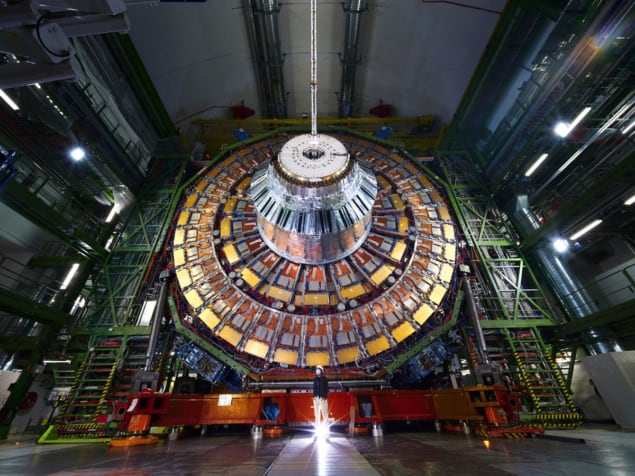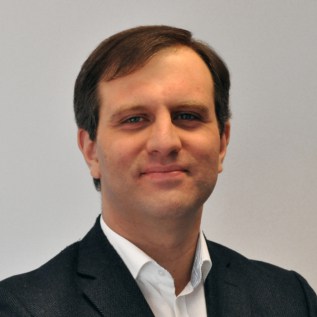CERN’s Quantum Technology Initiative (QTI) is designed to enhance collaboration between the high-energy physics and quantum technology communities. Joe McEntee talks to Benjamin Frisch, a member of the CERN QTI management team and CERN’s Knowledge Transfer group, about achievements to date and the priorities for the next phase of the initiative, which started in January 2024

What are the long-term objectives for CERN QTI?
In its first three years, CERN QTI has accelerated the dialogue between the high-energy physics (HEP) and quantum technology communities. It’s all about creating an understanding of mutual benefits, identifying opportunities that quantum provides in HEP, and establishing specific areas of competence where CERN scientists and engineers can contribute to the development of quantum technologies and applications – both within CERN as well as within industry and the wider economy.

The CERN QTI roadmap, published in 2021, shapes our activity versus a set of strategic objectives, including: scientific/technical development and capacity-building; establishment of co-development partnerships with industry and academia; creation of a quantum tech community within HEP; and close integration with national and international quantum initiatives. Those reference points translate into a diverse R&D effort at CERN and specific projects spanning quantum theory and simulation; quantum computing and algorithms; quantum sensing and related nanotechnologies; and quantum networking.
So you’re seeking greater convergence between the HEP and quantum tech communities?
Correct. CERN QTI aspires to act as a focal point for R&D collaboration and knowledge exchange between the HEP and quantum technology communities, whether academic, industrial or government partners. Education, outreach and technical dissemination are the priorities. A case in point, created and organized by CERN QTI, is the International Conference on Quantum Technologies for High-Energy Physics (QT4HEP). The first edition, held at CERN in November 2022, attracted more than 250 international experts (see “The QC4HEP White Paper: the race for quantum advantage”, below). As a follow-up, in November 2023, CERN hosted the seventh edition of the interdisciplinary Quantum Techniques in Machine Learning (QTML) conference with more than 330 participants.
More specifically, how does CERN QTI maximize engagement with the quantum industry and supply chain?
CERN’s Knowledge Transfer (KT) group looks after CERN QTI activities in terms of industrial engagement strategy. This starts with an analysis of the industrial ecosystem in CERN’s member and associate member states plus a review of unmet needs across the quantum supply chain. All of which is then mapped versus CERN’s quantum know-how and technologies to inform discussions with industry on licensing, consultancy, co-development projects and intellectual property.
Formal links to key players in the quantum supply chain have been established through CERN’s associate membership of the European Quantum Industry Consortium (QuIC), a pan-European trade association for the quantum industry. Visibility is everything in this regard, which is why CERN QTI has a prominent exhibitor presence at flagship events like the European Quantum Technologies Conference (held in Hannover, Germany, in October) to highlight CERN as a potential innovation partner for quantum tech companies.
How is CERN QTI supporting wider efforts to develop the specialist quantum workforce?
A CERN initiative to encourage cross-fertilization between HEP and the quantum tech sector naturally includes a commitment to capacity-building. CERN is a melting pot of more than 16 000 people – staff scientists and engineers, postdocs and graduate students, as well as more than 13 000 scientific users from research institutes and universities across the world.
Alongside hands-on training, CERN QTI offers this diverse workforce ongoing education, training and professional development in all things quantum – including, for example, the QTI Journal Club, QTI Theory Forum, as well as an extensive programme of quantum science lectures, workshops and schools. Among CERN QTI’s flagship training events is the seven-part introductory online course on quantum computing given by Elias Combarro (University of Oviedo, Spain). The course was broadcast live and free-to-air at the end of 2020 and still attracts significant engagement today.
The QC4HEP White Paper: the race for quantum advantage

The formation of a dedicated working group on Quantum Computing for HEP (QC4HEP) was among the headline developments at the International Conference on Quantum Technologies for High-Energy Physics (QT4HEP), which took place at CERN in November 2022.
The working group, which includes more than 50 members from HEP institutes across the EU, US and Japan, has a remit to analyse the potential for quantum computing to realize a “paradigmatic change” in computing hardware and software for the natural sciences and beyond.
“We’re looking at the possibility of estimating the resources needed, case by case, to reach the so-called quantum advantage, where calculations which are unattainable or extremely expensive with classical machines become possible or practical with quantum computers,” says Michele Grossi, quantum senior fellow at CERN and a member of CERN QTI and the QC4HEP working group. “The group recognizes that the HEP community is key to unlocking the power of quantum computing, since the field is a rich source of challenging computational problems.”
There’s no shortage of momentum either. In July this year, the QC4HEP working group published a white paper (available on arXiv) to identify use-cases in theoretical and experimental particle physics where quantum computing could yield significant long-term upside. The paper is authored by experts from CERN, DESY, IBM Quantum and over 30 other organizations.
“In terms of theoretical aspects in particle physics,” adds Grossi, “there are promising areas related to the evolution of quantum states, lattice-gauge theory, neutrino oscillations and quantum field theories in general. On the experimental side, meanwhile, the white paper singles out areas related to jet and track reconstruction during high-energy particle collisions, extraction of rare signals, for-and-beyond Standard Model problems, and parton showers [cascades of radiation].”
The working group is currently prioritizing a set of HEP applications to implement as part of IBM Quantum’s “100×100” Challenge, a next-generation quantum computing testbed that will come online in 2024.
Further reading
Alberto Di Meglio et al. 2023 Quantum computing for high-energy physics: state of the art and challenges. Summary of the QC4HEP working group arXiv
What lessons have been learned during Phase I of CERN QTI?
It’s encouraging to see broad recognition of CERN QTI’s expertise as a driving force for scientific collaboration across disciplines – in effect, acting as an “honest broker” linking the HEP and quantum tech communities. There’s also been tangible progress, with the projects pursued in the first two years of CERN QTI pointing to long-run opportunities for quantum technologies in many areas of HEP – from theoretical considerations and quantum computing infrastructures for “big data” analytics to next-generation detector designs across different energy regimes.

QUANT-NET’s testbed innovations: reimagining the quantum network
Working with industry and academic partners, CERN QTI is also committed to scaling the talent pipeline – whether supporting scientific programmes here at CERN or transferring those coveted skills into the emerging quantum supply chain. The latter is key: while many commercial entities in the quantum sector are seeing significant growth, those same companies are struggling to fill essential technical roles needed to accelerate, and ultimately sustain, that growth.
What’s next for CERN QTI?
Phase II of the initiative gets underway in January 2024 and is all about consolidation, prioritizing a set of investigations with potential game-changing impacts for CERN’s HEP research programme. From an organizational perspective, there will be four thematic Centres of Competence (CCs). The CC on Hybrid Quantum Computing Infrastructures and Algorithms, for example, will develop a robust understanding of the performance and optimal use of quantum computing systems (including integration with high-performance computing centres), ensuring that the requirements of the HEP community are taken into account within the industry supply chain. Co-development partnerships adapted to CERN use-cases will be essential along this coordinate.
The CC on CERN Technologies as Quantum Platform Demonstrators will develop competences linked to quantum computing and sensing technologies with direct applications to physics beyond the Standard Model. Meanwhile, the CC on Quantum Networking aims to position CERN as part of the R&D community for quantum communications, contributing specialist expertise to implement novel quantum network protocols.
- SEO Powered Content & PR Distribution. Get Amplified Today.
- PlatoData.Network Vertical Generative Ai. Empower Yourself. Access Here.
- PlatoAiStream. Web3 Intelligence. Knowledge Amplified. Access Here.
- PlatoESG. Carbon, CleanTech, Energy, Environment, Solar, Waste Management. Access Here.
- PlatoHealth. Biotech and Clinical Trials Intelligence. Access Here.
- Source: https://physicsworld.com/a/cern-qti-harnessing-big-science-to-accelerate-quantum-innovation/



